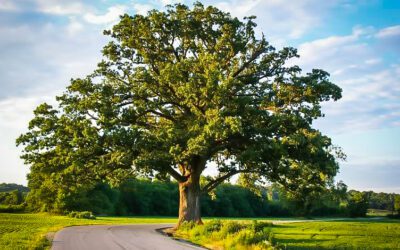You’ve seen them lining the streets of Missouri, tall and proud – the state’s trees bring life to our environment and local wildlife. But while they may look strong, this foliage needs a bit of help to remain healthy in an ever-changing climate. That’s where mulching comes in.
Mulching is a great way to protect trees from the sun, drought, excessive rain, and cold winters. Not only that, but it can also help keep weeds away and add some much-needed nutrients back into the soil. In other words, proper mulching technique is essential for our trees if we want them to reach their full potential.
If you’re new to mulching or just want to brush up on your skills – you’re in luck! The following is a step-by-step guide on how to mulch your Missouri trees for a healthier future – from selecting the right type of mulch for your area to applying it properly.
Why Mulch Matters for Missouri Trees
If you’re a Missouri resident, you know that keeping our native trees healthy is essential to our local ecosystem. That’s why it’s important to understand the right way to mulch.
Mulching helps protect your trees in multiple ways: it improves water quality and water access, keeps the roots cool and insulated in summer, and holds warmth throughout winter months. It also serves as a barrier from pesky weeds that can compete with your tree for nutrients.
By applying mulch correctly around the base of your tree, you optimize moisture retention and reduce the chances of weeds for up to three years, ultimately leading to a healthier tree overall. Remember to use only natural mulch like wood chips or shredded bark and keep it two-to-four inches away from your tree’s trunk. Doing so will help give your tree the best chance of survival.
The Right Mulch Choice for Trees
Mulching trees is an important task for keeping our environment healthy, but it needs to be done the right way. Knowing which type of mulch is best for your trees can make all the difference.
Generally speaking, mulch material should be organic matter such as wood chips or bark, leaf litter, or compost. Synthetic options like rubber or plastic might seem like quick solutions, but they can’t provide the benefits that organic materials bring, such as:
- Improving soil nutrients and texture
- Holding soil moisture
- Regulating soil temperature
- Protecting plants from extreme temperatures
- Reducing erosion
- Reducing weed pressure
- Adding esthetic appeal.
Organic mulches are also biodegradable and great at retaining moisture – critical in Missouri’s humid climate! When selecting the type of organic mulch for your tree, consider whether the tree is shade-tolerant or not; shade-tolerant trees respond well to more bulky materials like shredded bark or wood chips. Consider consulting with a professional arborist from Hentges Tree Service if you need help deciding which option best suits your needs and those of your tree.
Optimal Amount for Coverage and More
When it comes to mulching trees, the amount of mulch is important for keeping them healthy. Your goal is to create a ring around your tree that is about 3-4 inches deep. Getting the depth of mulch coverage just right is helpful for controlling moisture, weeds and also for making sure your tree looks its best.
There are certain guidelines you should follow to make sure you’re applying the ideal amount of mulch, including:
- Calculating the coverage area – measure the trunk diameter and multiply it by pi (3.14) to get the circumference
- Following basic principles – most authorities advise against piling mulch up against the tree trunk, as this can suffocate or cause rot
- Keeping distance – leave 2-3 inches between the trunk and the mulch layer
And, most importantly, you don’t want to pile up too much mulch – it is best not to exceed 4 inches in depth. Doing so will create a warm and inviting environment for pests like termites or carpenter ants. So be sure to keep it around 3-4 inches deep instead.
Strategies for Spreading Mulch Properly
It’s essential to have the right technique when it comes to putting down the mulch around your trees. Here are a few strategies for spreading mulch properly and guaranteeing the healthier future of Missouri’s trees:
Rule of Thumb
When mulching, follow the rule of thumb; spread the mulch in an even layer about three inches deep, but no more than four to five inches deep. This is important because if you put down too much, you’re smothering out the airflow around your tree which would be bad for its overall health. Plus, too much could prevent water from getting down to the roots and cause rot.
Push it Back
When you put the mulch down around your tree’s trunk, don’t just cover up its entire base or “volcano” it. Make sure you spread it out a bit so that when it rains, water doesn’t pool around your tree.
Layer Approach
If you want to maximize your efforts, do a “layer approach” with mulching: start with a one-inch layer of organic material on top of the soil surface, then follow up with a two-inch layer of wood chips or bark chips in order for your tree to get all that moisture retention and aeration benefits.
Caring After Installation: Regular Maintenance and Watering
It’s not enough to just properly install your mulch and forget it. To ensure that your tree is getting the most out of its home, regular maintenance and watering are essential.
Mulching Maintenance
Mulching must be done regularly so that the zone of mulch around a tree remains uniform in shape and depth. The roots need to be consistently groomed to prevent them from weighing down the tree or leaving too much exposed surface area. This can be achieved by refreshing the mulch a few times a year and adjusting any edges that have become rounded over time.
Watering Requirements
No matter how thickly your mulch is applied, proper watering is imperative. Make sure you water your tree deeply on a weekly basis in order to keep its roots adequately hydrated. If rainfall is light, consider supplementing with extra water, ideally with soaker hoses or sprinklers that won’t wash away the mulch. Keep an eye on soil conditions – it should remain loose and moist, but free from pooling water or overly dry patches.
Creating a healthy environment for your tree with mulch is only half of what it takes for success. Regular maintenance and watering will ensure it stays healthy for years to come!
Hentges Tree Service is your local resource for all your tree care needs! Reach out to our experienced arborists for a consultation today!
DO YOU NEED HELP?
We’re here to serve you and we provide free estimates.



